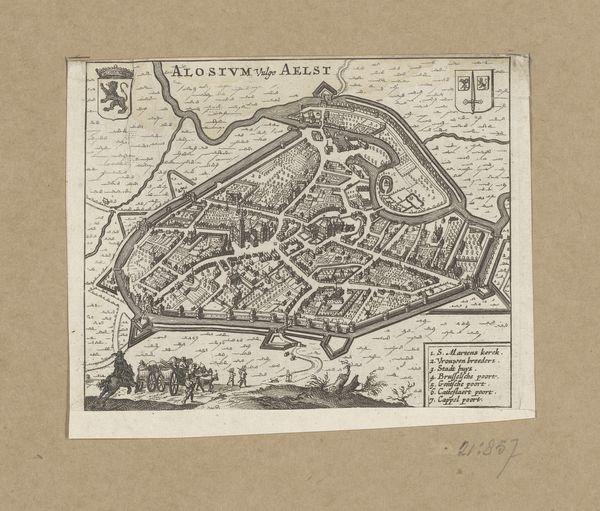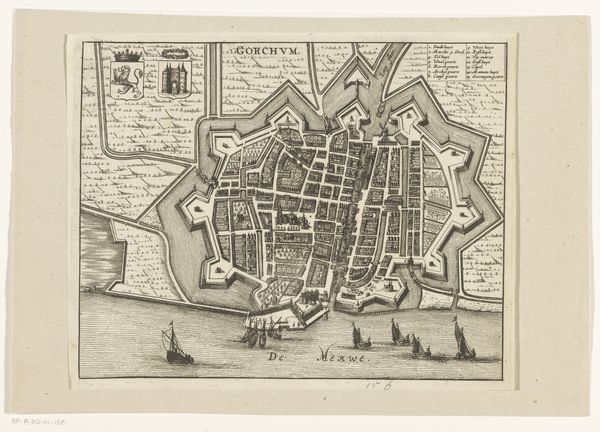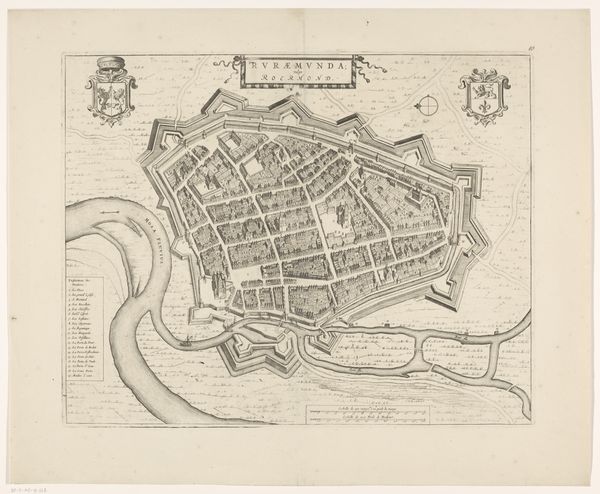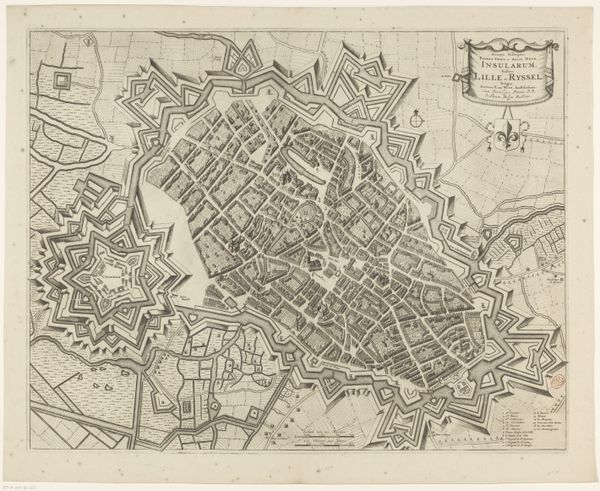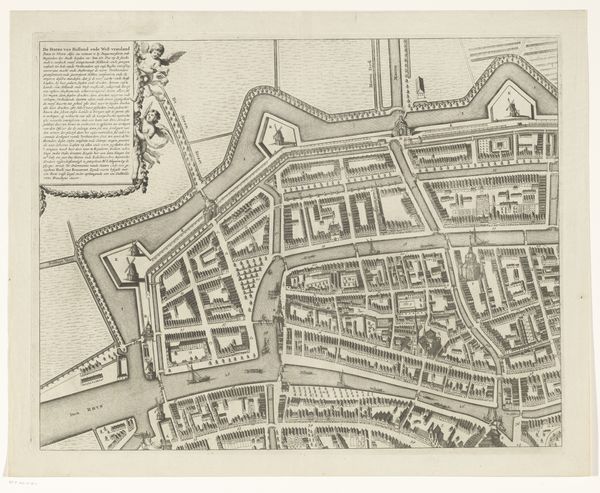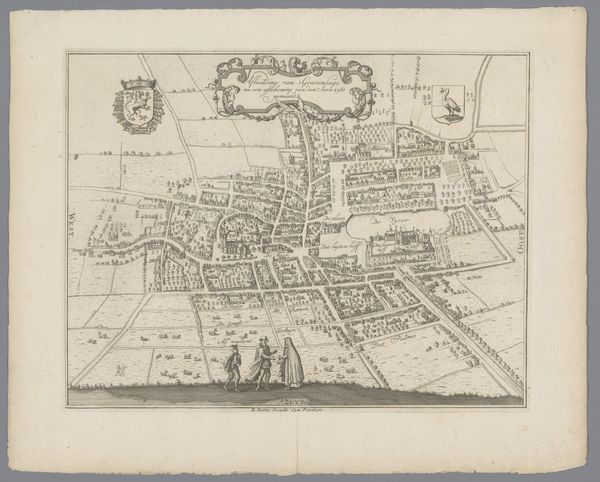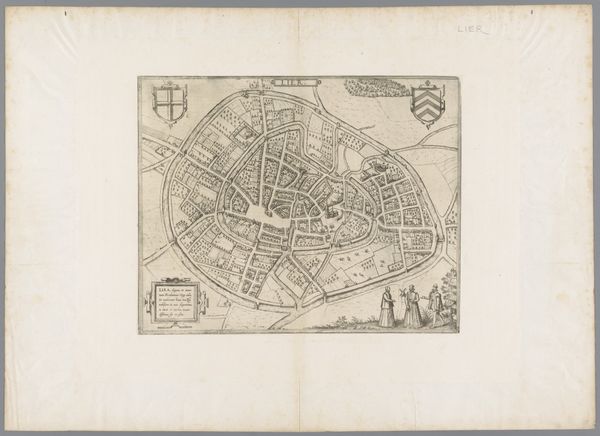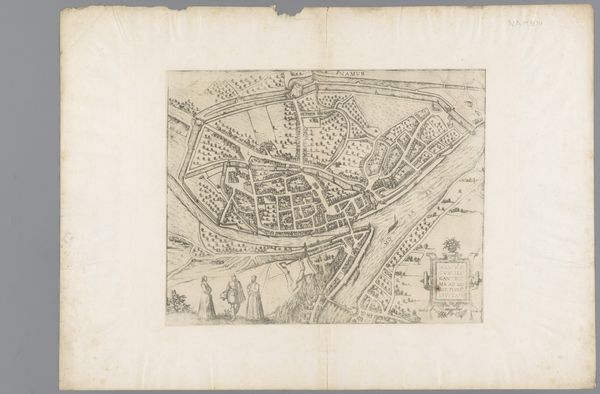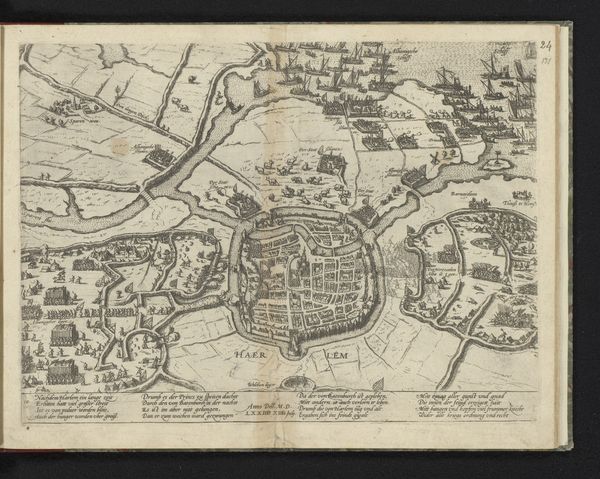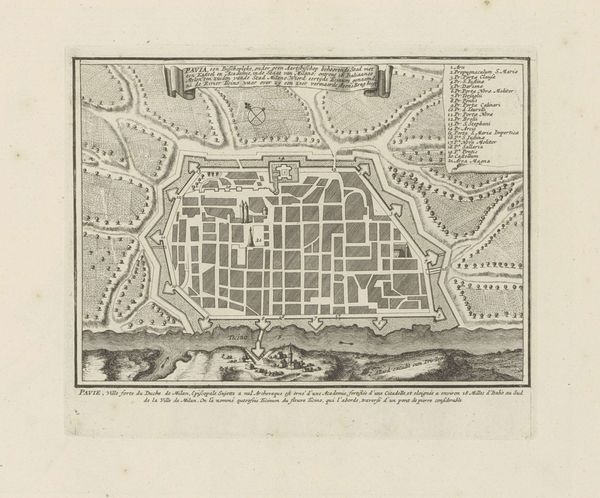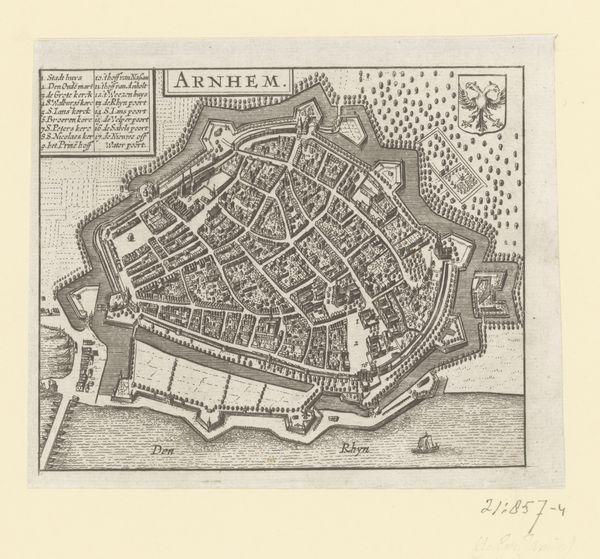
print, paper, engraving
#
dutch-golden-age
# print
#
landscape
#
paper
#
cityscape
#
history-painting
#
engraving
Dimensions: height 129 mm, width 143 mm
Copyright: Rijks Museum: Open Domain
Editor: We’re looking at "Plattegrond van Gorinchem," an engraving on paper from 1660, at the Rijksmuseum. It's a bird's-eye view of the city. It’s fascinating how the mapmaker has combined precision with an almost decorative quality. What stands out to you as you consider this work? Curator: What strikes me is how this image functions as a portrait of a collective identity. Cities, especially fortified ones like Gorinchem, were potent symbols of civic pride and security. Note the coat of arms displayed prominently, along with the detailed rendering of fortifications. It's not just a map; it's a statement of power, a visual encapsulation of Gorinchem's self-image in the Dutch Golden Age. Have you ever thought of maps as self-portraits? Editor: A self-portrait, that’s interesting. I guess I hadn’t considered how much cities wanted to project an image, just like people do. Curator: Exactly! Look at how clearly the defensive structures are delineated, the walls and bastions meticulously rendered. This speaks to the city’s perceived strength and its place in the geopolitical landscape. Maps like these weren't just for navigation; they were propaganda, visual declarations of belonging and dominance. What feelings do these strategic renderings generate in you? Do you consider them as a protection symbol, or more aggressive assertion of identity? Editor: I see it now! It’s meant to say, “We are strong; we are secure.” I guess seeing the city laid out so neatly like that also projects order. Curator: Order and control – key concepts for a rising mercantile power. Even the ships on the river contribute to this idea; symbols of commerce and connectivity, demonstrating Gorinchem’s link to the wider world. It’s fascinating how much symbolic weight is packed into this single image. Editor: This has completely changed my understanding of maps. I always saw them as functional, but they’re clearly so much more. Curator: Precisely. It reminds us that images are rarely neutral. They are imbued with layers of meaning and intention, reflecting the cultural values of their time. I'll never see an old map the same way again!
Comments
No comments
Be the first to comment and join the conversation on the ultimate creative platform.
